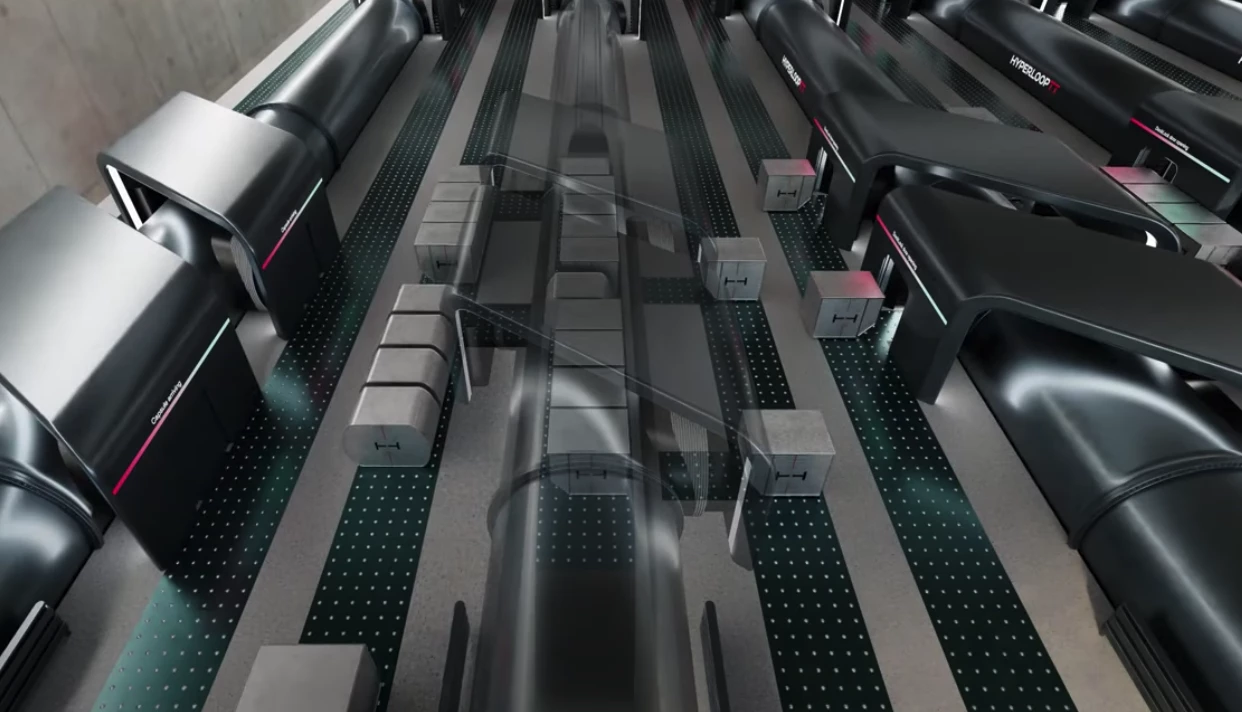For the past decade, Hyperloop Transportation Technologies has been pushing forward on a near-frictionless high-speed capsule system it ultimately hopes will revolutionize both passenger and freight transport. Its latest introduction, the Express Freight system uses a fully automated combination of vacuum tubes, levitating capsules, conveyer belts and electric doors to simultaneously load and unload freight before firing it onward. HyperloopTT says the system promises to be faster, more cost-effective and more sustainable than air or truck shipping.
The Express Freight system follows the 2019 Great Lakes Feasibility Study, which determined that a high-speed hyperloop freight system would be more cost-effective than air or truck transport. HyperloopTT worked with UK design firm Tangerine to develop a hyperloop freight transport system with four primary goals in mind: integrating with previously detailed infrastructure, maximizing freight volume inside capsules, enabling the fastest possible freight loading, and ensuring enough flexibility to adapt around different customer demands.
The Express system accommodates smaller air cargo containers via staggered loading and unloading capsule side doors, rather than the ocean shipping container-swallowing top-loaders HyperloopTT designed for Hyperports. The freight-loaded Express capsules would travel through the hyperloop vacuum tubes, and upon arrival at the terminal rely on a conveyer-automated loading and unloading system to simultaneously drop off inbound containers and load outbound ones.

The conveyor belts run in parallel with the hyper tubes and use a rollerball system to move freight perpendicularly on and off the capsules. HyperloopTT and Tangerine have lowered the capsule floor to maximize volume and fit standard air cargo containers. A pocket door between the structural ribs further increases internal space, the company says.
"Hyperloop Express Freight will fundamentally transform how goods are transported globally," forecasts HyperloopTT CEO Andrés de León. "By incorporating key innovations like fast automated loading systems, maximized freight capacity and flexible configurations, we have developed a hyperloop design optimized for transporting freight at unprecedented speeds at cheaper rates than currently offered by air and road. This new standard for shipping will enable greater efficiency, sustainability and flexibility in supply chains worldwide."
HyperloopTT's plan calls to integrate the Express Freight system within its greater passenger-based infrastructure. As previewed in the past, the passenger system relies on similar fuselage-shaped capsules rocketed at speeds up to 760 mph (1,223-km/h) via a maglev system operating inside low-pressure vacuum tubes. Passengers would board and debark at destination terminals with help from automated "DockLock" doors that automatically attach to the capsules to avoid pressure disruptions.

The Express Freight system is Hyperloop's latest vision along the path toward making hyperloop systems a reality. In May, the company and its partners were awarded €800 million (US$853.5 million) of NextGeneration EU funding to build a commercial hyperloop in Italy.
The 30-second animated video shows how HyperloopTT envisions the Express Freight system operating.
Source: HyperloopTT














